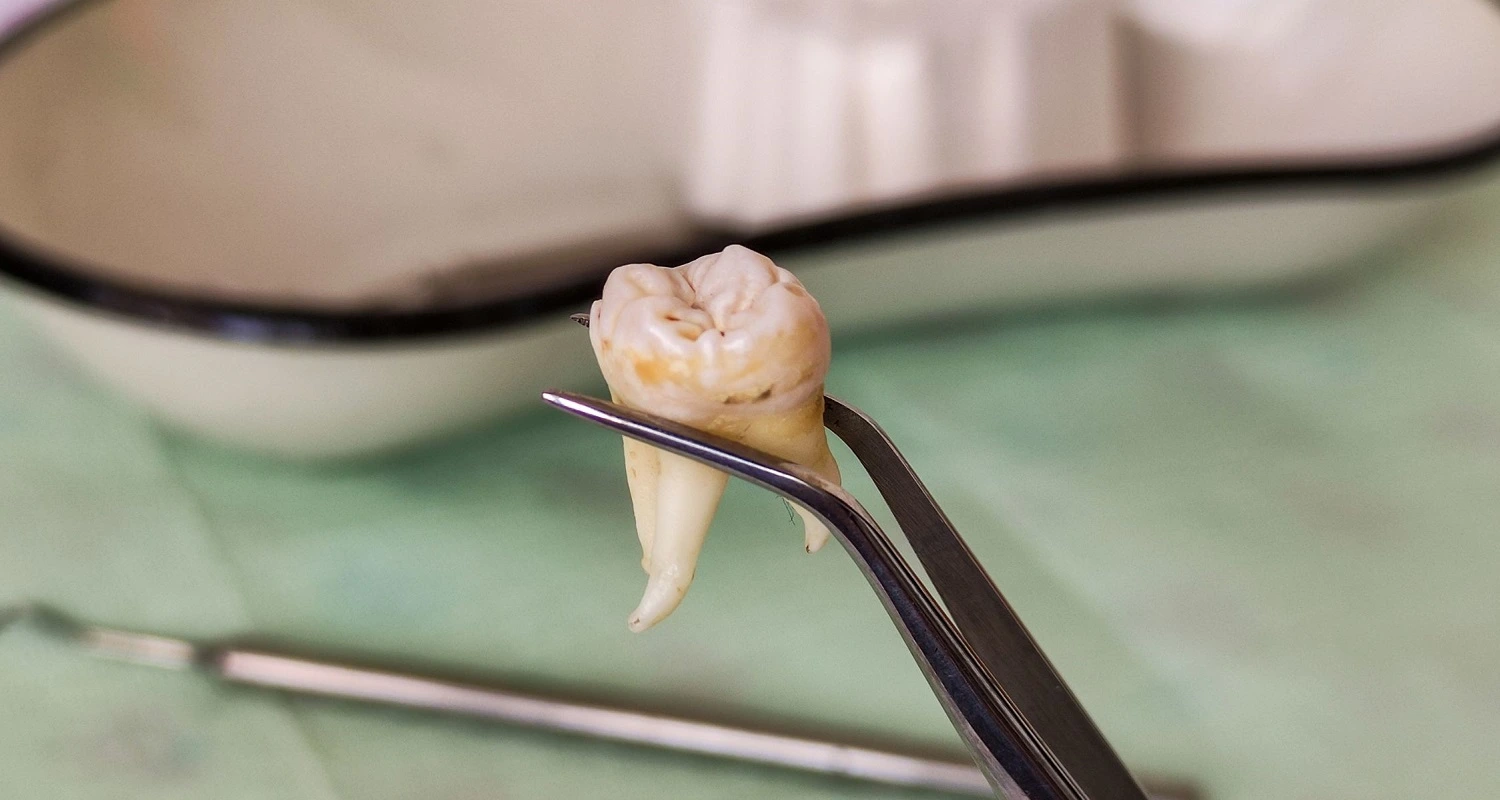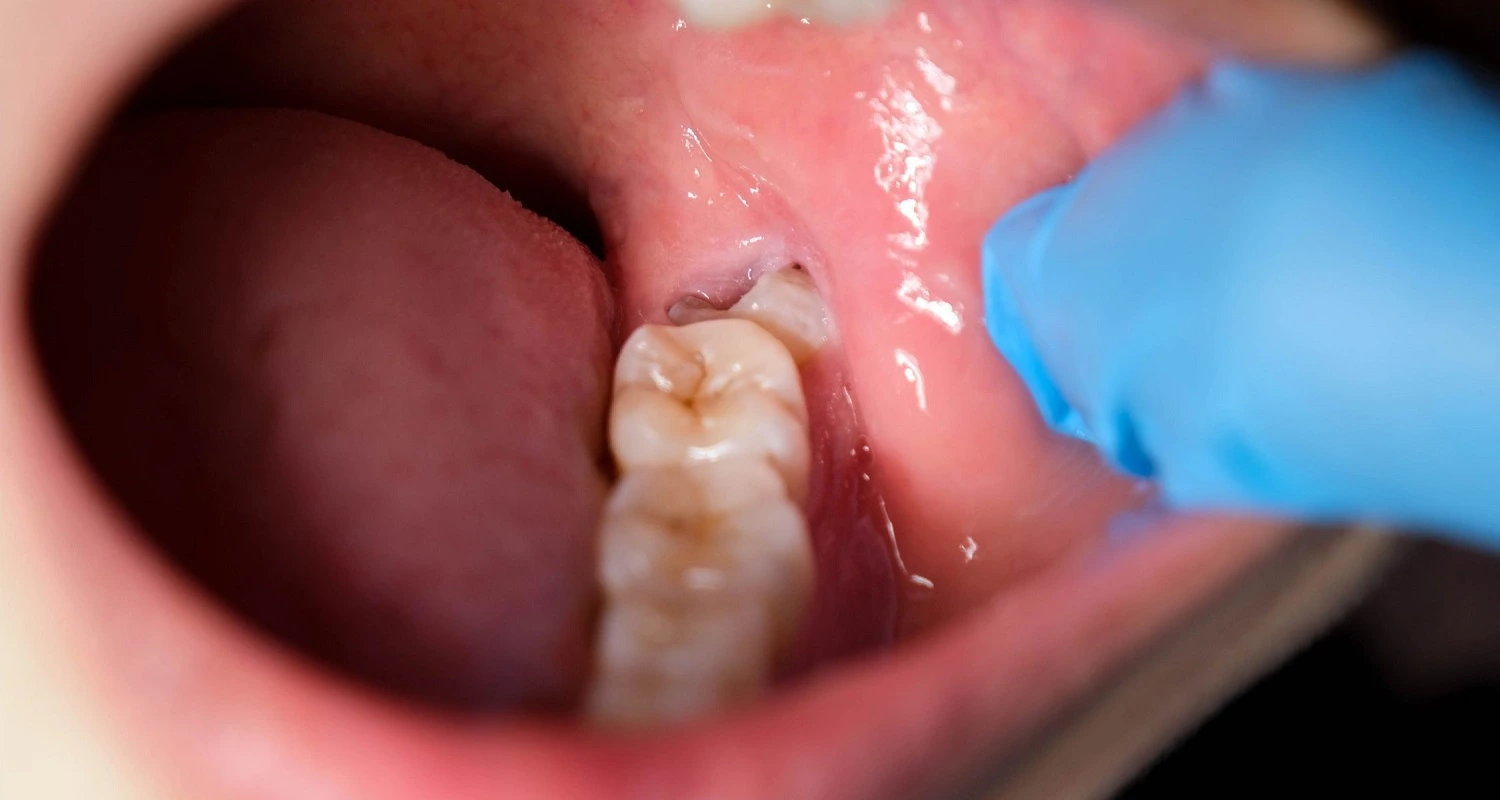Last Updated on: 10th December 2025, 06:19 am
What happens if the wisdom tooth hole never closed? This article will answer that question. Also, you will know how wisdom teeth are extracted, how long it takes for the hole to close, and what are the recommendations before and after dental surgery.
The wisdom teeth are positioned further back in the mouth; they are indicated to be extracted when they do not have enough space to grow yet are retained or present pain, infection, or other dental problems.
Generally, when a wisdom tooth is to be extracted, the patient may feel anxious about what will happen during and after surgery. Like any procedure, it is necessary to take precautions to ensure post-surgical care to help you have a better recovery.
This article will explain how wisdom teeth are extracted, the nature of the healing and scarring process, and what care should be taken to help speed up the recovery.
How are Wisdom Teeth Extracted?
Depending upon the position of the tooth, there are 2 ways to extract it:
1. Simple Extraction
Performed when the tooth is visible and in a good position in the mouth. The procedure is the same as extracting any other tooth: anesthesia is applied, the tooth is released from the bone that supports it (dislocation) and is removed from the mouth with forceps.
2. Surgical extraction
Performed when the wisdom teeth are within the gum, or only a part of the tooth can be observed. For the procedure, anesthesia is injected, then an incision (cut) is made in the gum to uncover the tooth, the surrounding bone is removed, and the tooth is dislodged and removed from the mouth, In some cases, it may be necessary to divide the tooth or grind it into several parts to be able to extract it. When simple extractions become complicated, a surgical extraction is performed.
After performing the extraction, it is normal for the space that housed the tooth to be empty; this appears as a hole, with the name alveolus. Over time, during the healing process, this cavity will be covered with gum tissue and then filled with bone.
After the procedure, there are restrictions that we should follow in order to avoid infection or other complications. We have a comprehensive guide about drinking alcohol after tooth extraction that you might consider especially if you love drinking.
How long does it Take for the hole to Close After Removing the Wisdom Tooth?
The healing and scarring process after removing the wisdom tooth occurs as follows:
• 24 to 48 hours after extraction
In the first days after surgery, it is normal to have swelling, some bleeding, tenderness, and difficulty opening the mouth.
On the day of the extraction, since blood is left inside the alveolus, after 24 hours a clot forms. This is essential for proper healing of the area; additionally, it helps keep the hole free of bacteria and food debris.
• 7 to 21 days after extraction
After a week, the smallest hole can be observed, as it will begin to close thanks to the regeneration of the gum tissue. At this stage of recovery, if stitches were made, it is now indicated to remove them.
The gum finishes closing 2 to 4 weeks after the tooth is extracted, but you may notice a crack or depression in the area since the socket has not finished healing.
• 1 to 6 months after extraction
After a month, the gum should be completely closed without bleeding. The socket can take 4 to 6 months to recover the bone tissue and fill in completely.
Since the wisdom tooth leaves a hole after extraction, and it takes a long time to fully close, there’s a chance that food may get stuck in the hole. We recommend you check out this article about irrigating a wisdom tooth socket.
What happens if the Wisdom Tooth Hole Never Closed?
If there are no complications, the wisdom tooth hole closes naturally within the established timeframe; if that doesn’t happen, it is likely that you are presenting a condition known as a dry socket or alveolitis.
Alveolitis is an inflammation of the alveolus. It is usually painful and occurs when the blood clot formed after a dental extraction detaches or dissolves before the healing process can be completed and exposes the bone. It can also be caused by an infection near the area of extraction.
Symptoms of dry socket include:
• Intense pain, 3 or 4 days after extraction.
• Total or partial loss of the blood clot.
• The extraction hole appears whitish or grayish.
• Pain extends from the affected area to the ears, eyes, or neck.
• Unpleasant odor and taste in the mouth.
This condition can be avoided if post-surgical recommendations are followed properly.
How to Avoid a Dry Socket and Speed Up the Closure of the Wisdom Tooth Hole?
Recommendations before surgery
• Avoid eating an excessive quantity of food the night before surgery.
• No smoking.
• In case of infection, take an antibiotic before surgery, always prescribed by a dentist.
• Refrain from consuming alcoholic beverages as they can have detrimental effects on the teeth. This information is particularly relevant when considering the effects of alcohol on dental health.
On the day of surgery, practice good oral hygiene, with a toothbrush, dental floss, and mouthwash.
• Inform the surgeon about any systemic diseases that you suffer from, as well as allergies and medications you consume and complications after previous surgical interventions.
Recommendations after surgery
In the postoperative period, the most important thing is to reduce excessive bleeding; therefore, it is advised:
1. Immediately after extraction, bite down on a gauze pad for 15 to 30 minutes to achieve hemostasis (stop bleeding).
2. Do not eat until the anesthesia wears off.
3. During the first 24 hours you should avoid spitting, rinsing, and any activities that generate suction, as this can dislodge the clot that is forming; also avoid physical exertion, exposure to the sun, or eating hot food as it can accelerate blood flow and cause bleeding.
4. Avoid rubbing your tongue over the wound.
5. On the day of surgery, it is recommended to sleep with the head elevated (semi-sitting) to control bleeding.
6. Brush teeth 12 hours after the extraction.
7. Eat soft and liquid foods, as well as avoid eating hard foods with cereals and seeds since these can be easily introduced into the surgery area. To learn about other foods that can be eaten after an extraction, please feel free to check out this article.
8. Do not take oral contraceptives.
9. When eating food be careful not to pass through the affected area.
10. After 24 hours clean the area gently and rinse with warm salt water, this will help accelerate the healing process.
11. Keep the extraction area clean and free of food debris.
Following these recommendations will be of great help for the wisdom tooth hole to close faster and avoid complications such as alveolitis.
When to Consult the Dentist or Doctor?
If after 4 days after the extraction you present any of the following symptoms, consult your dentist. He or she will review them and determine if it is necessary to prescribe any medication or do any additional intervention:
• Signs of infection
• Persistent or throbbing pain that radiates to other areas of the face or neck
• Presence of pus
• Profuse bleeding
• Fever
• Swelling
Conclusion
It is important to follow the recommendations given by the dentist to avoid these and other complications.
Although it is normal for a hole to remain in the area after the removal of the wisdom tooth, good care will help it heal in the established time without additional problems.
Frequently Asked Questions
How long can it take for a wisdom tooth hole/socket to close?
1 to 6 months after extraction: After a month, the gum should be completely closed without bleeding. The socket can take 4 to 6 months to recover the bone tissue and fill in completely.
How long does it take for gum tissue to close over an open socket?
7 to 21 days after extraction: After a week, the smallest hole can be observed, as it will begin to close thanks to the regeneration of the gum tissue. At this stage of recovery, if stitches were made, it is now indicated to remove them.
The gum finishes closing 2 to 4 weeks after the tooth is extracted; but you may notice a crack or depression in the area since the socket has not finished healing.
What should I expect after wisdom tooth extraction?
After wisdom tooth extraction, it’s normal to experience swelling, some bleeding, and tenderness for the first 24 to 48 hours. A blood clot will form in the socket, which is essential for healing. Over the next few weeks, the gum tissue will start to close over the hole, and it can take up to six months for the bone to fully heal.
What is a dry socket, and how can it be prevented?
A dry socket, or alveolitis, occurs when the blood clot at the extraction site dislodges or dissolves before healing, exposing the bone. Symptoms include severe pain, bad breath, and a whitish or grayish appearance of the extraction site. To prevent dry socket, avoid smoking, spitting, or drinking through a straw, and follow your dentist’s post-surgery care instructions.
When should I consult a dentist after wisdom tooth extraction?
If you experience persistent pain, signs of infection, excessive bleeding, presence of pus, fever, or significant swelling four days after the extraction, contact your dentist immediately for further evaluation and treatment.
Share:
References
1. Dry socket – Symptoms and causes (January 25, 2017). Mayo Clinic. https://www.mayoclinic.org/diseases-conditions/dry-socket/symptoms-causes/syc-20354376
2. Gorder, J. P. (Updated: April 25, 2023).Dry Socket. Healthline. https://www.healthline.com/health/dental-and-oral-health/dry-socket
3. Mamoun, J. S. (2018).Dry Socket Etiology, Diagnosis, and Clinical Treatment Techniques. Journal of The Korean Association of Oral and Maxillofacial Surgeons, 44(2), 52. https://doi.org/10.5125/jkaoms.2018.44.2.52
4. Sissons, C. (Updated: March 30, 2023). Wisdom teeth removal recovery: Timeline, healing, and care. Medical News Today. https://www.medicalnewstoday.com/articles/321657
5. Whelan, C. (January 7, 2021). Tooth Extraction Recovery: How Long Does It Take for the Hole to Close? Healthline. https://www.healthline.com/health/how-long-does-it-take-the-hole-to-close-after-tooth-extraction
6. Wisdom Teeth Removal: Procedure & Recovery. (Reviewed: November 30, 2021). Cleveland Clinic. https://my.clevelandclinic.org/health/treatments/22119-wisdom-teeth-removal
7. Wisdom Teeth Removal: What Adults Should Expect. (Reviewed: October 31, 2021). WebMD. https://www.webmd.com/oral-health/wisdom-teeth-adult
-
Nayibe Cubillos M. [Author]
Pharmaceutical Chemestry |Pharmaceutical Process Management | Pharmaceutical Care | Pharmaceutical Services Audit | Pharmaceutical Services Process Consulting | Content Project Manager | SEO Knowledge | Content Writer | Leadership | Scrum Master
View all posts
A healthcare writer with a solid background in pharmaceutical chemistry and a thorough understanding of Colombian regulatory processes and comprehensive sector management, she has significant experience coordinating and leading multidisciplina...





















